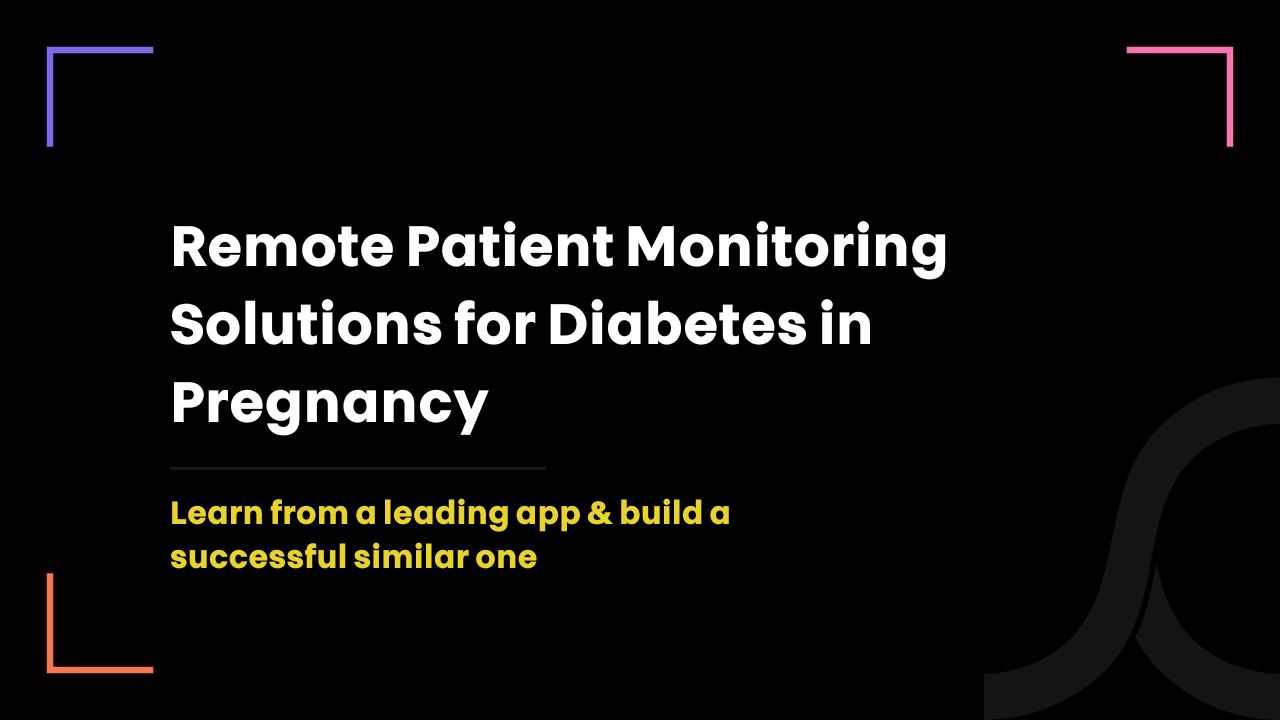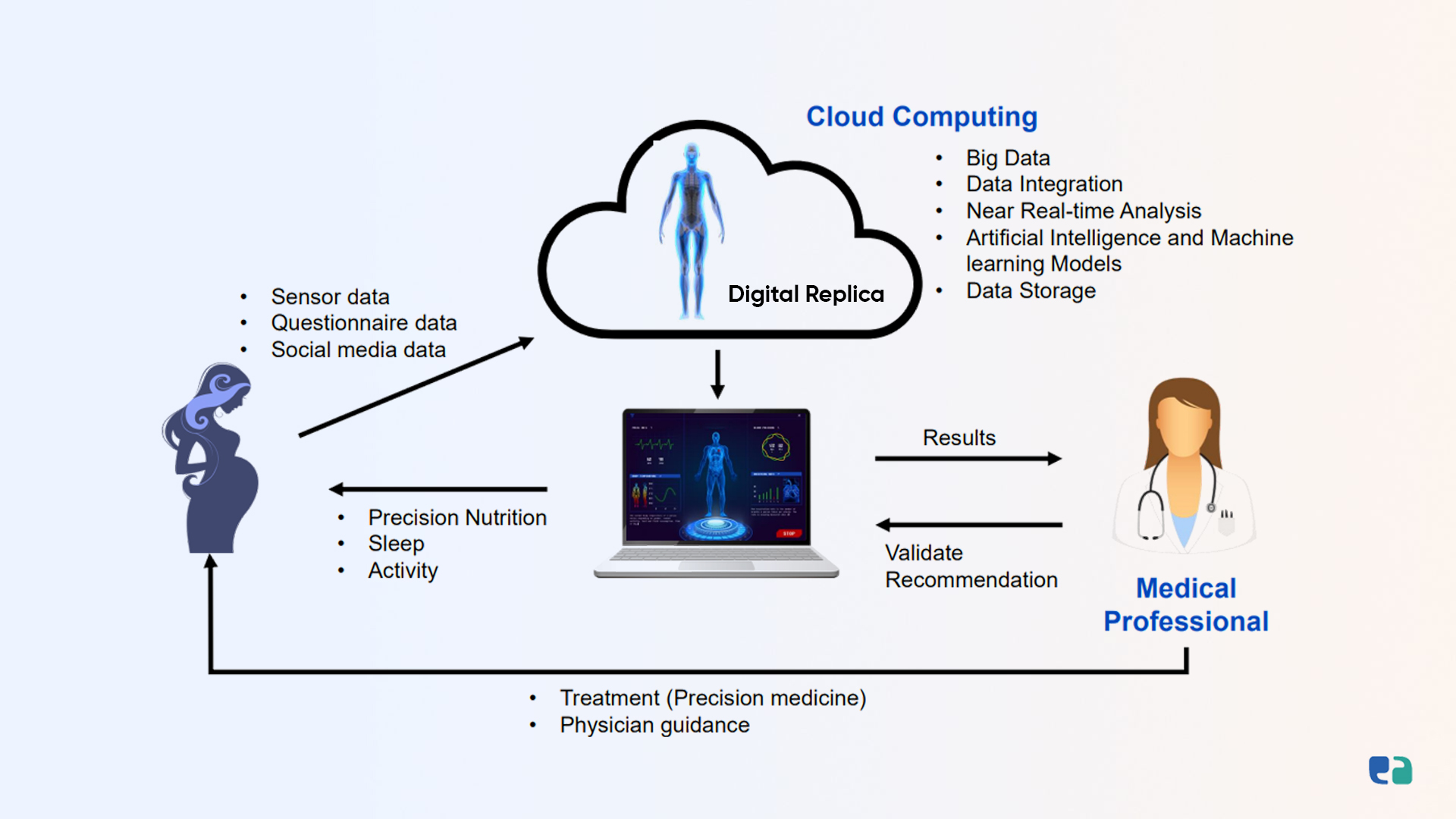Developing a Gestational Diabetes App Like Malama Health: Features & Case Study

7 months ago
Becoming a mom is a beautiful experience.
The moments of joy, love, and lots of care.
But it's not a smooth ride as some data is threatening.
1 in 6 births is impacted by high blood sugar during pregnancy?
That’s a huge number!
Each case of gestational diabetes mellitus (GDM) can cost about $6,000 a year.
And here’s something even more concerning;
Half of the women with GDM go on to develop type II diabetes later in life.
Maternal health is super important for all of us.
It affects not just mothers and babies but also families and communities.
Unfortunately, managing complications like gestational diabetes often relies on outdated methods, which can be tough for both patients and healthcare providers.
But here’s where technology comes into play!
Take Malama Health, for example. Founded by Mika Eddy, they have an app that helps women with GDM easily track their health.
And I think it's a great idea to build such a solution and start your entrepreneurial journey.

Alert: Rising Diabetes Rates in Pregnancy in Canada
Recent data shows a worrying trend: diabetes during pregnancy is increasing in Canada.
From 2005 to 2019, the rates of type 1, type 2, and gestational diabetes have all gone up. Younger women are at a higher risk.
- Type 1 Diabetes: Increased by 25%, from 2.4 to 3 cases per 1,000 deliveries.
- Type 2 Diabetes: Jumped 189%, from 2.7 to 7.8 cases.
- Gestational Diabetes: Rose by 162.7%, from 36.5 to 95.9 cases (without BC). With BC, it went up by 153%, from 41.2 to 104.3 cases.
Young women, aged 15 to 19, saw the biggest increases:
- Type 1 Diabetes: Up by 92.9%, from 1.4 to 2.7 cases.
- Type 2 Diabetes: Rose by 330%, from 1 to 4.3 cases.
- Gestational Diabetes: Increased by 291% (from 10.6 to 38.2) without BC, and by 260% (from 9.9 to 37.8) with it.
Pregnancies with diabetes have higher risks of high blood pressure, C-sections, and issues for babies.
It's High Time to Update Your Gestational Diabetes Management Practices
Managing gestational diabetes (GD) the old-fashioned way is tough.
Many Canadian women still use pen-and-paper logs to track their blood sugar and meals.
This method is time-consuming and can lead to mistakes, making it frustrating for pregnant women.
Healthcare providers also struggle with messy logs.
It complicates patient visits and makes tracking progress harder.
So, what do women want? Here’s a quick list:
- User-friendly tools: They need a simple way to track blood sugar and meals.
- Personalized insights: Women want tailored advice, like identifying food triggers and spotting blood sugar patterns.
- Easy communication: They need a simple way to share their data with healthcare providers.
A good remote patient monitoring app for diabetes in pregnancy can automate logging, provide personalized tips, and allow secure data sharing.

Before Building Your Own, Learn From Leader: Malama Health

Malama Health had an inspiring journey that every health-tech entrepreneur can relate to.
In 2022, the founder of Malama Health faced a personal struggle with gestational diabetes.
She was tired of pricking her finger and logging meals on paper.
"That's not how things should work," she thought. She wanted a better solution—so she built one. And here we are.
An easy solution to track blood sugar, meals, and health data.
And that's not all.
The app even syncs with glucometers and allows doctors to monitor patients in real time.
Malama Health has gained significant traction, attracting over 170 patients in its pilot study with the Santa Clara Valley Medical Center, with promising early results.
85% of users who log at least seven times in the first week continue using the app through delivery.
It demonstrates effectiveness in engaging and supporting women with GD.
If you’re building a similar solution, take notes from Malama Health.

Features You Must Include to Build an Effective Gestational Diabetes Management Platform
A platform to manage gestational diabetes (GD) should be easy to use and helpful for both patients and healthcare providers. Here’s what you need:
1. Simple App for Patients
- Easy Glucose Logging
- Meal Tracking
- Track Other Health Data ( exercise, sleep, and medications)
2. Personalized Insights
- Find Food Triggers: Help patients spot which foods are affecting their blood sugar.
- Custom Tips: Give personalized advice, like suggesting different foods or exercises based on their data.
3. Easy Sharing with Providers
- Real-Time Syncing
- Quick Messaging
4. Provider Dashboard
- Show patient data in charts & graphs
- Use data analysis
- EHR Integration

Follow These 3 Steps, and Your App Is Ready
Well, you can develop a better app than Malama Health; all you need is step-by-step guidance. Explore these quick steps that we created with the help of our tech experts.
1. Conduct Thorough User Research
Start by understanding the needs of both patients and providers.
This involves interviews, feedback, and observing real-world challenges.
Malama Health saw the struggles women had with paper logs and the difficulties providers faced in accessing and interpreting this data.
2. Design a User-Centered App
Create a patient-facing app that's easy to use and engaging.
- Intuitive Interface: Make the app simple, even for non-tech users.
- Seamless Data Entry: Simplify logging glucose levels and meals with features like glucometer syncing and remote blood sugar monitoring.
- Personalized Insights: Offer tailored recommendations and insights based on user data.
3. Build a Strong Backend
Ensure the platform is secure, scalable, and reliable.
- Data Security: Protect patient data with encryption and follow HIPAA regulations.
- Scalability: Use cloud services to handle growth.
- Reliability: Ensure the platform stays up and responsive for users.
Partner with Healthcare Providers and Institutions for Integration
It's important to know the person you're dealing with, and healthcare providers and related staff are an integral part of it.
Their collaboration will help build a solution that smoothly fits into their current workflow.
Hence, your app can comply with clinical guidelines and meet the needs of both patients and providers.
Don't forget:
Integrate your solution with Electronic Health Records (EHR) systems.
This allows for easy data exchange and streamlines workflows.
This way, your platform can effectively address real-world clinical needs.
Case Study: How We Developed a Digital Health App for Managing Gestational Diabetes

Overview
Recently, we encountered a healthcare startup, who is now our client, that wanted to build a digital solution for gestational diabetes mellitus (GDM).
The purpose of this app is to help expectant mothers and doctors by utilizing advanced technology to improve health outcomes for women diagnosed with GDM.
The Challenge
Gestational diabetes affects many pregnant women worldwide and can lead to severe complications.
Traditional management methods often rely on diet and exercise alone, which is not a sufficient solution.
Therefore, there is a clear need for personalized and effective solutions.
Solution Development
We designed a digital health app that creates a virtual representation of the patient.
It offers personalized recommendations for diet and lifestyle based on real-time data collected from sensors that monitor glucose levels, vital signs, and physical activity.
Key Features
- Generates real-time insights for individualized dietary & lifestyle adjustments.
- Uses AI to analyze patient data & predict health outcomes.
- Ongoing Monitoring, tracks health metrics postpartum.
Impact
By delivering a user-friendly and secure platform, this app enhances the management of gestational diabetes, empowering women to improve their health outcomes while ensuring data privacy and security.

